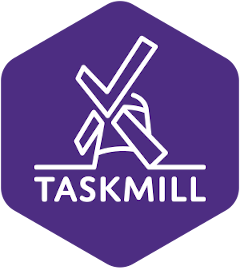Have you encountered the situation where the Project Manager and Scrum Master roles are smoothly interchanged both in conversations and in practice in a project? Have you ever been wondering what is the difference between these two roles? Or maybe you have found yourself needing to learn new values, skills, and attitudes as agile development becomes more widespread?
The Scrum Master or Agile Master role associated with agile development is not synonymous with a Project Manager. To understand the difference, one can first examine the more traditional distinction between the waterfall model and projects, and agile, or continuous development.
A project is a kind of entity, limited in time and scope, with clear objectives, roles, stakeholders and tasks agreed in advance. The project therefore manages what has been agreed in advance, often at a very precise task level, and often with a high degree of predictability.
A skilled project manager is like a cross between an engineer and a forecaster: he or she can plan and describe what will be done next, and who will do it. Once these things are organized in Excel or PowerPoint, the project manager’s job is to oversee and drive execution as closely as possible to the original plan or Gantt chart. Such a beautiful plan is comforting for management to look at. In the hands of the project manager, the whole vague, changing world becomes a systematic, planned entity.
The challenge is just how often does this plan actually hold true – at least in terms of objectives? Did our preconceived guesses about the right tasks and their timing create the exact customer value we expected?
Agile development and Scrum Master
Agile development is based on the idea that more important than predicting tasks and solutions is discussing the real problems with the customer and the business, proposing different solutions to them by constantly monitoring value and iterating ideas.
Every day, week, and month, the Agile team learns more about the customer’s problems, the solutions they have independently developed and how they respond to customer needs. Accuracy increases as an Agile team independently adapts the task level to these learnings.
Agile development also has the idea that in order to leave room for learning and exploration, and to ensure quality, only one of these can be predefined: either the scope of what is being done, or the schedule, while in a project both are set in advance. Success is measured by how well you have managed to deliver the right value to customers and the business. Not by how many tasks are completed.
A Scrum Master is the servant leader of an agile team. He or she advises, supports, and coaches the team and its product owner on the various approaches that help to create value. They ensure that everyone feels comfortable in the team and that the all the agile values from transparency to trust are implemented. They both spar, support and hold accountable. They ask the right questions, rather than impose straightforward solutions. Instead of doodling on PowerPoint, they think of practical ways to improve your daily life as a team member. They are present. For you, the team, and the client.
Instead of looking at the clock, they look you in the eye.
Tutustu miten meidän asiakkaat ovat hyötyneet Scrum mastereista
Do you want to read more about the Agile development?
- 5 asiaa, jotka yhdistävät voittavia tiimejä
- Työmääräarvio – faktaa vai fiktiota?
- Huonon tuoteomistajan käsikirja
- Opi OKR-malli puolessa tunnissa
- Mikä ihmeen SAFe
Are you interested in the Scrum Master role?
Whether you have just started in your career as a Scrum Master or have already accumulated some experience, you are sure to find the right coaching to boost your career in our modular training. The modules will also help you prepare for the Professional Scrum Master certification (scrum.org). Scrum.org certifications are highly valued, and once achieved, the certification never expires.
Check out at least the following trainings!
